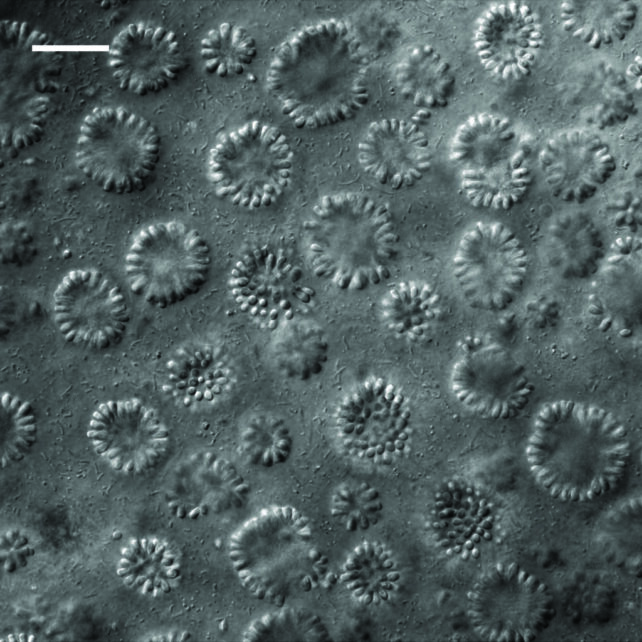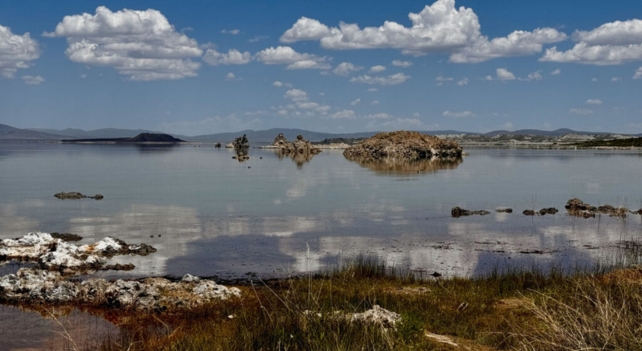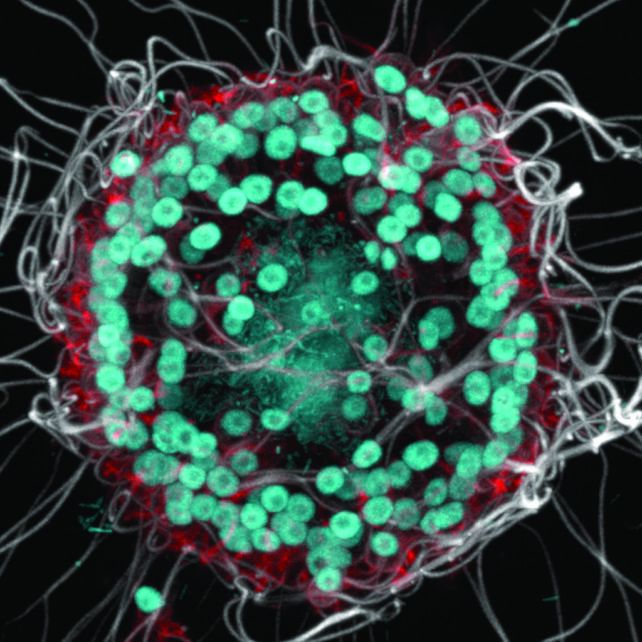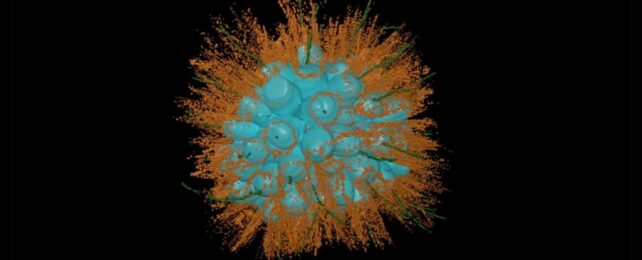In an incredibly inhospitable lake, scientists have discovered a new tiny species that forms huge colonies. These strange creatures have an unusual relationship with other microbes and could even provide clues to the origins of complex life.
The new species has been named Barroeca monosierra, and it belongs to a microbe group known as choanoflagellates – single-celled organisms that can cluster together to form colonies and act suspiciously like multicellular lifeforms.
Unlike other "choanos", as the team calls them, B. monosierra was discovered in a super salty environment. And it was absolutely thriving there, forming colonies of almost 100 cells, up to four times bigger than related species.

Weirder still, the centers of the colonies contained even smaller communities of live bacteria, making B. monosierra one of the simplest organisms to have its own microbiome.
The microbes might be sheltering from the toxic lake water, the researchers from the US, UK, and Spain suggest, or the choanos could actually be farming the bacteria to eat later. Or maybe both.
Choanoflagellates are of particular interest to biologists because they're considered the closest living relative of animals that aren't themselves animals. Their colony-forming behavior could also help bridge an evolutionary gap between single-celled and multicellular organisms.
"One of the things that's interesting about them is that these colonies have a shape similar to the blastula – a hollow ball of cells that forms early in animal development," says cell biologist Nicole King from the University of California, Berkeley.
"We wanted to learn more about it."

Mono Lake in California is an extremely unpleasant place to live. It's almost three times saltier than the Pacific Ocean and laced with chlorides, carbonates, and sulfates that have built up over 80,000 years. As such, not many forms of life call it home – mostly just alkali flies, brine shrimp, and a few species of tiny worms.
But when the researchers closely examined a sample of water from Mono Lake, they spotted a previously unknown resident.
"It was just packed full of these big, beautiful colonies of choanoflagellates," says King. "I mean, they were the biggest ones we'd ever seen."
These single-celled organisms kind of resemble sperm cells, with long tails called flagella that they use to propel themselves. When they form colonies, individuals point their flagella outwards to help the whole group twirl and tumble around as one.
In other choano colonies, the heads of each cell meet in the middle. But in these B. monosierra colonies, the centers are hollow, with the cells connected by a protein and carbohydrate extracellular matrix.
The team stained the microbes with a DNA dye, which not only revealed the donut-shaped chromosomes of the choano cells as expected, but also a surprising cloud of DNA in the supposedly empty center.
RNA probes revealed the presence of bacteria in there, while experiments with fluorescent amino acids showed that they were still alive, not just scraps from the choanos' previous meals.
Access seems to be selective too. Phylogenetic analysis showed that only some of the types of bacteria found in Mono Lake can be found inside these colonies.
In another experiment, the team cultured choano colonies with bacteria-sized latex microspheres, and found that they didn't end up in the colony centers.
That shows the bacteria aren't just passively floating in and getting stuck – instead, they're actively getting in or being let in, for the benefit of themselves, the choanos, or both.

"No one had ever described a choanoflagellate with a stable physical interaction with bacteria," says King.
"In our prior studies, we found that choanos responded to small bacterial molecules that were floating through the water, or [that] the choanos were eating the bacteria, but there was no case where they were doing anything that could potentially be a symbiosis. Or in this case, a microbiome."
The researchers plan to use B. monosierra to study the interactions between bacteria and more complex organisms. They could even help us better understand how life made that crucial leap from single- to multicellular forms.
The research was published in the journal mBio.
